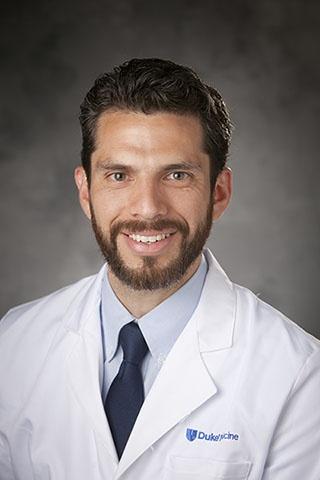The International Association of Chiefs of Police (IACP), the world’s largest police management association, recognized in October the role police officers have played in enforcing racism. On behalf of the IACP, Chief Terry Cunningham of Wellesley, Mass., said:
“In the past, the laws adopted by our society have required police officers to perform many unpalatable tasks, such as ensuring legalized discrimination or even denying the basic rights of citizenship to many of our fellow Americans. While this is no longer the case, this dark side of our shared history has created a multigenerational—almost inherited—mistrust between many communities of color and their law enforcement agencies.”
The IACP drew praise from many commentators. We should not be as encouraged. An ill-defined problem will necessarily produce an ineffective solution—or worse.
U.S. law cannot explicity discriminate by race
Since the passing of the Civil Rights Act of 1964, U.S. law cannot explicitly discriminate by race. There is evidence, however, that laws are written, passed and unequally applied to perpetuate racism.
For example, high level Richard Nixon and Ronald Reagan advisers have confirmed the way language, like “urban crime” or “war on drugs,” was used to appeal to the racist voters and to justify political repression. In 2005, the chair of the Republican National Committee apologized to the National Association for the Advancement of Colored People (NAACP) for exploiting racism to win elections.
The result of this milieu is that while white people use and sell drugs at the same rate as black and Latino Americans, Americans of color are more likely to be stopped, searched and arrested for drug offenses. This inequity should come as no surprise: while in 2014 1.2 million Americans were arrested for possession alone. Americans of color, especially black Americans, go on to receive higher sentences than comparable white defendants. Use of force, including lethal force, is a current problem—it is not “in the past,” as Cunningham suggests.
An analysis of The Guardian’s The Counted database by Amanda Onwuka, an epidemiologist at the University of Michigan, showed that although all races were armed at the same rate in encounters with police, police were 3.43 times more likely to kill unarmed black citizens than unarmed whites citizens. This demonstrates less of a break and more of a continuation of our history of slavery, and these facts should profoundly disturb all Americans—physicians included.
Police violence and health
The health effects of police violence are numerous and difficult to overestimate.
- In 2013, violence by law enforcement resulted in 100,000 hospitalizations or emergency room visits.
- $1.8 billion of medical costs and work lost resulted from law enforcement leading to death and injury in 2010.
- Several studies have shown that adolescents who experienced racial discrimination had signs of more molecular aging and poorer adult health than control peers.
- The trauma of being repeatedly stopped, at times with excessive force, can lead to anxiety and post-traumatic stress disorder.
- For the families of those killed by police there is a profound grief.
Physicians must therefore respond to police violence. The American Medical Association, America’s largest physician association, has issued policies that affirm “that physical and verbal violence between law enforcement officers and public citizens, particularly within racial and ethnic minority populations, is a social determinant of health.”
Their policies also address the appropriate law enforcement use of tasers, car chases and guns — specifically in hospitals. The latter was passed after an uproar of activism following the shooting of Alan Christopher Pean in 2015 during a hospital discharge in McAllen, Texas.
AAFP and APHA respond
This summer, the American Academy of Family Physicians (AAFP) also passed a new policy regarding discriminatory policing, which supports the recommendations of the Final Report of the President's Task Force on 21st Century Policing. This new policy marks a step in the right direction for the AAFP from their 3,500-word position paper on violence, which mentions law enforcement only once: to recommend physician collaboration with police on intimate partner violence.
This year, the American Public Health Association (APHA) passed policies that go beyond suggesting further research and rejecting discrimination. This month, the APHA updated a 1998 policy, making 11 recommendations, two of them entirely new, to several levels of government, including police departments.
Like the Fraternal Order of Police (FOP), the APHA also supports addressing the root causes of crime: poverty, lack of education and unemployment. However, unlike the FOP, the APHA recommends decriminalizing “quality of life” crimes, diverting police department funds to restorative justice and violence prevention programs, and establishing community oversight of police departments among others.
APHA does not only aim to improve police resident interactions, through de-escalation and implicit bias training, but recommends reducing interactions with police altogether by addressing the causes of over policing, such as incentives for drug-related arrests and the erosion of civil liberties.
Both the President’s Task Force on 21st Century Policing and the Fraternal Order of Police seem to assume that more police produce more public safety. Yet, a cursory observation of the safer neighborhoods in a city show there are actually fewer police there than in higher crime neighborhoods. Public safety must be more than policing, the way health is more than health care.
When it comes to police violence, we can start by passing policies that address the problem comprehensively, like the newest APHA policy attempts to do. As the AAFP position paper on violence states: “it is our responsibility to create and contribute to policies designed to keep communities healthy.”
Jonathan Jimenez is a second-year resident with the Duke Family Medicine Residency Program. Email jonathan.jimenez@duke.edu with questions.
Editor’s note: Duke Family Medicine residents guest blog every month. Blogs represent the opinion of the author, not the Duke Family Medicine Residency Program, the Department of Community and Family Medicine or Duke University.
